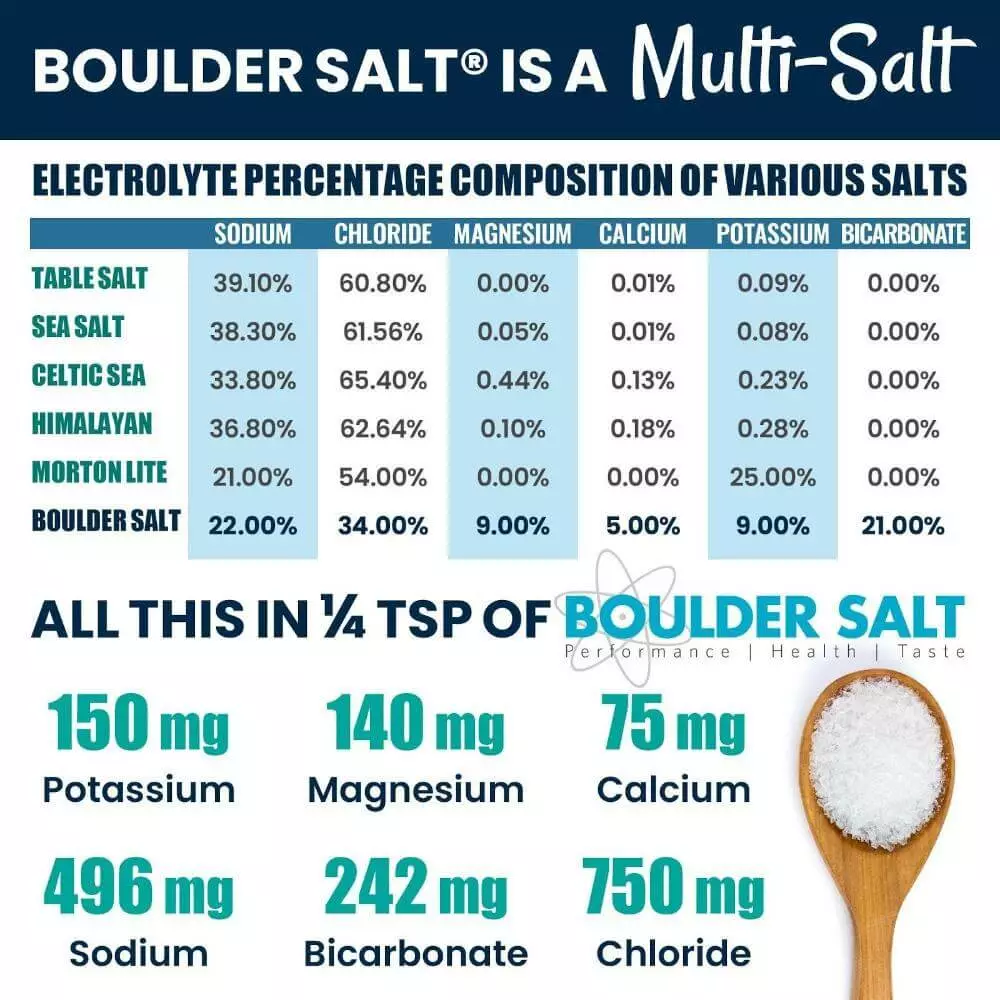
Low Sodium Diet Ideas Any Diet is Low Sodium with Boulder Salt! Are you looking for low sodium diet ideas and recipes

Boulder Salt has a lot of wonderful uses that we’ve already explained extensively–things including rehydration, replacing electrolytes, adding terrific flavor to food, and reducing the sodium in your diet. But let’s expand our horizons and explore what salt used to be used for and discover what salt is being used for now and into the future.
When we think of salt the first thing that we think of is that it is a great seasoning on nearly every food. Whether it’s sprinkling salt on meat and potatoes or sprinkling salt on chocolate and caramels, salt adds great flavor to whatever it touches. It is particularly good at bringing out the flavors of particularly bland foods like starches and carbohydrates, but it can help virtually everything.
Salt has been used for millennia as a preservative for all sorts of foods, including meat and dairy and fish. Before we had refrigerators we had to rely almost exclusively on preserving food with salt. And there’s no reason why we can’t return to old food preservation techniques to make some amazing recipes here and now.
Pickling is one of the most common ways that salt can preserve a food: salt brine dehydrates bacterial cells and therefore slows (or stops) the growth of bacteria in food. It will take much longer for food to spoil. It also inhibits the bacteria responsible for botulism, one of the most deadly forms of food poisoning.
Even in the age of refrigerators, we still love our salted and cured meats, as well as the wonderful variety of foods that can be pickled–everything from cucumbers to asparagus to cauliflower to cherries to mushrooms to strawberries to tomatoes–you can pickle almost anything! (And can we get a shout out for pickled herring?)
Salt acts as a binding agent when you’re binding meat together to reduce cooking losses. This is especially apparent when we make sausage: salt extracts the proteins in meat allowing it to bind together. When you’re making sausage, salt soluble protein solutions coat globules of fat, allowing for meat, fat and moisture to all be held together. Using Boulder Salt for homemade sausage is a great way to keep some of your favorite foods (and maybe favorite traditions) alive with a little less harmful effects from regular table salt!
Yes, salt can even make your food look better. This is seen easily in salty meats such as ham and bacon, where the salt, combined with sugar and nitrate, produce a beautiful warm color that we associate with well-cooked meats.
But this applies to bread, too! To get that golden crust on a loaf of bread, use salt to reduce the amount of sugar destruction and therefore increase the caramelization.
A lot of us went through a bread baking phase last year. Make it a regular habit to bake your own sourdough loaves and you can easily sub regular salt with our salt alternative, When baking, salt in the dough inhibits both yeast and mold from running wild and ruining the caked goods. Fermentation control is also important in cheese making, where salt helps to control the rate of lactic acid formulation (as well as making the cheese taste great.)
Chefs, food scientists, our team and customers at Boulder Salt are always trying to innovate and create new ways to use salt. Some of the techniques that are used that you might not think of are:
Coffee lovers often put a pinch of salt into their grounds before brewing, because it takes away the bitter taste. We may never even taste the bitter, but we know there is a physiological process taking place. Customers tell us the change is apparent with just a pinch of salt. It seemed strange to us but once we tried it we could see the appeal!
This relates to knocking down the bitterness, but by adding salt to something with a little bitterness, we can turn it sweet. Perhaps the best known example of this is sprinkling salt on grapefruit (or mixing into a Salty Dog cocktail). The bitterness decreases and we are only left with the sweet. This can enhance sickly sweet items as well, providing a little more nutrients and creating a different flavor profile.
Aromas are enhanced by the addition of salt, even if we don’t realize it. Salt, it has been said, needs to be added in the cooking phase to get the best results. When added at the table, salt becomes the dominant flavor and the other tastes don’t bind together well. But if the salt is added during cooking, you get the full benefit–and it comes out in the smell.
From ancient times to modern day there are a thousand ways to use salt in cooking – and even more ways to use it in household chores such as cleaning. This year find new ways to use salt and share your favorites with us!

More to explore

Low Sodium Diet Ideas Any Diet is Low Sodium with Boulder Salt! Are you looking for low sodium diet ideas and recipes

Mountain View Welding does excellent work!
We make the highest recommendation for Loren Tonsing and the staff at https://mountainviewwelding.com Mountain View Welding does excellent work! Excellent communication to

Boulder Salt is in stock at The Raw Store!
Where in the world is Boulder Salt? This time the news is that Boulder Salt is stocked at The Raw Store in